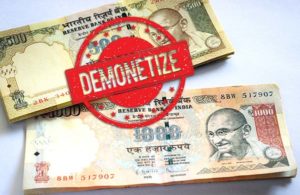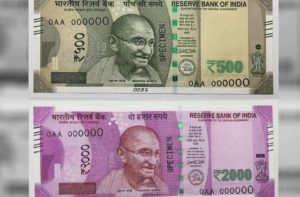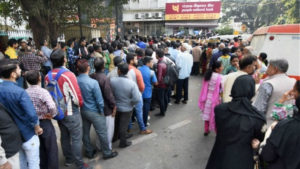Late in the evening of 8th November 2016, Indian Prime Minister Narendra Modi announced that effective midnight on 8th November, Indian currency notes of Rs.500 and Rs.1,000 will cease to be valid, stating “These notes are just papers from tomorrow.”
The announcement came at a time when the Indian working class were already back from home and many didn’t even know about this announcement till the next morning. This spontaneous campaign soon came to be known as ‘Demonetization‘ or the ‘notebandi‘ as people called it in Hindi.

The purpose of this campaign by Prime Minister Modi was to eradicate problems of fake money, corruption, terrorism and black money in India, in one stroke – a stroke he thought was going to be a masterstroke, but it was later criticized and called a very unthoughtful move.
While the announcement said that government hospitals, pharmacies, petrol pumps and the likes were still supposed to accept Rupees 500 and 1,000 notes, many of them were afraid to do so, as the more of these notes with them meant a greater deal of trouble to stand in bank lines and exchange these notes for new Rs.2,000 notes.

I remember that night running from overtime at work and stopping at the nearest petrol pump to fill in some petrol and get rid of my 500 Rs. notes. However, petrol pumps were shying away from accepting these notes and when the Indian public was creating a havoc, I even seen pump owners shutting down for the night.
What followed was a disastrous situation over the next few days and weeks in the country. The common man seemed to have suffered the most as they stood in lines for 4-5 hours in the hope of being able to withdraw money from ATMs.
Everywhere you went, there were huge lines outside ATMs as people were desperate to have some cash on them. However, many of them returned home without anything as most ATMs were not stocked with enough notes and even those who were able to withdraw, had a small limit to manage with.
I remember that I found it difficult to find money in an ATM for over a week since that announcement, and was emptying piggy banks of coins from my cupboard to get the daily grocery shopping done. Every common man in the country suffered during this phase. And now, the BJP wants to celebrate this day as ‘Anti Black Money Day‘.
A year has passed since the demonetization campaign in our country, and I would like to ask our viewers if you think this campaign truly was a success? Did any of those who held black money in the economy really suffer? Do you not think they found ways and means to make sure they retained their black money?
West Bengal Chief Minister Mamata Banerjee wants to protest against the campaign, and has turned her Twitter display picture completely black for that purpose:
I have turned my Twitter DP black #DeMoDisaster. Let us raise our voices #Nov8BlackDay 1/2
— Mamata Banerjee (@MamataOfficial) November 8, 2017
Former Prime Minister Manmohan Singh, who is usually trolled on social media for being extremely silent, had a bit to say about the issue of whether 8th November should be Anti Black Money Day or not. He came down hard on PM Modi, using terms like “monumental mismanagement” and “organised loot and legalised plunder” to describe that move one year back.
We aren’t sure of whether this campaign was a success or not. Prime Minister Modi will stand for re-elections in 2019 and if the people of India like what he has done for the country, he will surely be re-elected for another term of 4 years as Prime Minister.
People of India, please have your say. You can leave your comments on this blog, and also vote on the polls on the various social platforms:
Should 8th Nov be celebrated as Anti-Black Money Day?#Ask #Poll #Vote #DeMonetisation #India #NoteBan #AntiBlackMoneyDay #Protest #Like
— Read Scoops (@ReadScoops) November 6, 2017
If you liked what you read, you can head over to Read Scoops for similar content, or you can even subscribe to Read Scoops notifications.




